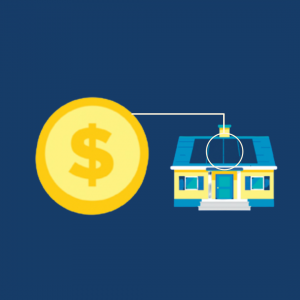The Biggest Little State of Rhode Island for Solar Too
Now that you are familiar with solar incentives in Rhode Island, let’s look at just how affordable solar panel systems are in The Ocean State. Although the cost of solar panels has changed over the years, Rhode Island residents are looking at very reasonable prices for their solar panel needs. Plus, who doesn’t want to save some money and help the environment at the same time?
And in case you think solar just isn’t right for Rhode Island, the truth is that it ranks 29th out of the fifty states in terms of number of installations, growth projection ranking, total solar investment, percentage of electricity generated from solar, and number of homes powered by solar. What better way can you say “Biggest Little State of Rhode Island”?
But What Do We Mean By “Very Reasonable Prices”?
Okay, so solar is pretty big in little Rhody, but why do we say the cost of solar panels is affordable there? Well, for starters, it is important to remember what solar is replacing. By that we mean that while pretty much everyone in the United States has an electricity bill, and pretty much consider it about as certain a bill as death and taxes, the fact is that the cost of electricity is not the same nationwide. Some regions are far more expensive than others. And since it is relatively hard to avoid your electricity bill, especially if you live in a place where electricity is expensive, it stands to reason that solar becomes more affordable.
Why? Because when you think of solar we think you shouldn’t think about the cost of solar panels, racking, inverter, and all the rest (at least from an investment point of view), but instead the cost of the kW hours that system is going to produce. Because it’s the kW hours your system produces that replace the kW hours you have to buy from the utility. In short, how much cheaper can solar make your cost of electricity? 
Let’s Break the Cost of Solar Panels Down
Take for example a system we priced for a prospective customer in RI at the end of last year. They use a little over 12,000 kW hours every year. At today’s RI electricity rates that means they are paying around $2,350 per year to the utility (we’re using 19 cents per kW hour). We proposed building a 10,360 watt system for them that would generate a projected 12,448 kW hours their first year.
Now, a lot of solar companies will ask you to focus on the system’s cost divided by that 10,360 watt number. And sure, that’s a measure of a system’s cost. But to us doing that is like measuring the cost of a car in dollars per horsepower. It doesn’t mean all that much in regard to its utility to you. Because there’s tons more to consider (certainly for a car, but also for solar).
But just for argument’s sake, our price per watt for that system came in just a bit over $3.40 per watt and if you check around for averages on various websites, you’ll see that’s a tad high, but pretty close to the average. And afterall, averages don’t take into consideration roof pitch, number of array sections, where your inverter has to go, etc. In short, every system is different and some are just going to be on the high side.
But as we noted above, we think the number you should really look at is your cost per kW hour, because that is what you are actually buying and in this case, that math looks pretty darn good. In short, after you factor in incentives (federal and state in this case) and the full 25 years of solar power production, this system will make this customer’s cost of electricity about 5 cents per kW hour.
Consider that number for a bit. If this customer buys this system they lock in a price of 5 cents per kW hour for the next 25 years. Or alternatively, they can keep paying the utility 19 cents per kW hour. And if history is any guide, that 19 cents is going to go up most years by about 3% to 4% percent per year.
Our Recommendation to You
So what are we suggesting you do? Well, obviously we think solar is a tremendous investment. You pay a fair bit upfront of course, but it allows you to lock in an amazing low cost of electricity for the next 25 years. Not to mention that the value of your house is projected to increase significantly, by roughly 4% (after all, any buyer will get the benefit of the system you’ll leave behind).
But we’re also suggesting that the differences between the installers should be about more than the cost of the system per watt (or horsepower as I noted above). After all, if you save say $3000 on this example system your cost per kW hour over 25 years drops by a bit less than one cent per kW hour, but we would ask – “at what risk”? Your installer is one of the biggest variables for your system’s 25 year expected lifetime.
But in the end, it is definitely true that solar in The Biggest Little State of Rhode Island is definitely something to strongly consider.





2 Responses to “Cost of Solar Panels in Rhode Island”
Wow!! Amazing blog. you are really a great writer. your solar panel procedure is really great. Solar panel installation is important for saving money and the environment.
Thank you so much for your comment! Please let us know if you have any further questions or concerns.
The comments are closed.